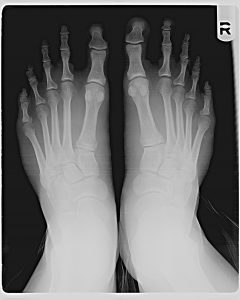A patch to help with pain of CRPS

Pain can originate from nerves (neuropathic) pain or from other non-nerve parts of the body like skin, muscles, and bone. Neuropathic pain is often described as burning, stabbing, shooting or shocking. This pain can be disabling and can be a disaster for someone’s quality of life. Complex regional syndrome is a type of nerve pain. In this study 56 patients tried a lidocaine plaster in addition to their regular medications and treatments. Lidocaine is a local anesthetic, similar to what a dentist would use to numb a tooth.
This study showed the lidocaine caused at least 50% reduction in pain in 75% of the people in the study. Complex regional pain syndrome is very hard to treat and if people can get their pain decreased from about 8/10 down to 4/10 the lidocaine 5% could be a great add on therapy.
Glossary:
Lidocaine: a local anesthetic, similar to the medication a dentist would use to numb a tooth temporarily
Neuropathic pain: pain originating from nerves
CRPS: complex regional pain syndrome
The Research
Source: J Pain Res. 2016 Oct 6;9:763-770. eCollection 2016.
5% Lidocaine-medicated plaster for the treatment of chronic peripheral neuropathic pain: complex regional pain syndrome and other neuropathic conditions.
Calderón E1, Calderón-Seoane ME2, García-Hernández R1, Torres LM1.
- 1Pain Unit, Anesthesiology Department, Puerta del Mar University Hospital.
- 2Health Center North-Algeciras, Cadiz, Spain.
Abstract
OBJECTIVES:
Chronic neuropathic pain and chronic complex regional pain syndrome (CRPS), in particular, are debilitating and difficult-to-treat conditions that have a strong impact on patient’s quality of life. The aim of this study was to evaluate the effectiveness of 5% lidocaine-medicated plaster as add-on therapy in patients with chronic peripheral neuropathic pain conditions, including CRPS.
PATIENTS AND METHODS:
This was a single-center, prospective, observational study set in a specialized pain unit of a tertiary hospital in Spain. A total of 56 patients with long-standing peripheral neuropathic pain, ten of them with CRPS, received 5% lidocaine-medicated plaster as add-on analgesic therapy for 6 months.
RESULTS:
After 6 months of treatment, a ≥50% reduction in pain intensity was attained by 75% of patients, as measured by numeric rating scale (NRS) for pain. The average NRS score was reduced by 61% (4.7 points), from a baseline mean score of 7.8 to an end point mean score of 3.1. Marked improvements were also observed in the CRPS group: six out of ten patients achieved a ≥50% reduction in NRS score, and the average NRS score for patients with CRPS was reduced by 51% (4.0 points), from a baseline mean score of 7.9 to an end point mean score of 3.9. The improvements in pain intensity were partially translated into a decrease in disability index and in anxiety levels.
CONCLUSION:
5% Lidocaine-medicated plaster may be useful as add-on therapy for a number of peripheral neuropathic pain conditions, including CRPS.











